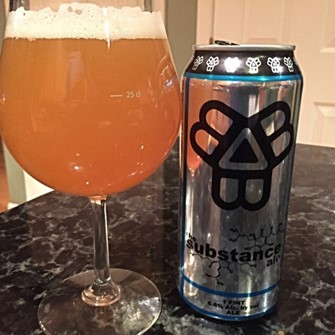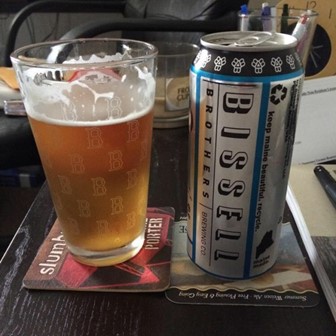Wednesday, December 6, 2017
Brew Day: Broken Fist IPA (American IPA)
A long time ago Jennie and I set up a Twitter account for our home brewery. Every now and again I get Twitter alerts for that account. One day I received an alert for a tweet with a link to a Beer Advocate thread entitled: "Is West Coast IPA still relevant?"
My answer is yes, of course it is! Some drinkers are so into and obsessed with New England Pale Ales and IPAs that perhaps those drikers feel that West Coast IPAs may no longer relevant. Some are so involved in their beer geekdom that they forget that not every craft beer drinker wants to wait in line at or trade for Tree House or Trillium. The craft beer drinkers that buy beer at a store are still buying plenty of West Coast and Midwest IPAs.
Modern West Coast IPAs from the San Diego area and New England IPAs are more similar than they are different. Neither type of IPA is overly bitter and both are highly aromatic. If you served a San Diego IPA and a Vermont IPA to a blind-folded drinker that hunts "whalez", that drinker would have a harder time than they would think discerning the difference in flavor between the two. In one blind tasting I actually preferred Port Wipeout IPA, a San Diego IPA that goes for $7 a bomber, to Heady Topper. Beer drinkers in general need to be more aware that they don't know what they don't know, and that Beer Advocate, RateBeer, or Untappd ratings are everything.
Digressing to my brew day, I dry-hopped my last New England IPA so aggressively that my three gallon batch only resulted in 24 bottles. As happy as I was with it, the beer went quickly. I needed to make another IPA soon. As much as I wanted to make another New England IPA, I already had most of the hops I needed to make another batch of Broken Fist. When I think of Southern California I think of sunshine. With summer coming, a SoCal-inspired IPA will hit the spot.
I have always hopped Broken Fist a little bit like a New England IPA with a small dry hop addition toward the end of active fermentation. That first dry hop is smaller than I would employ with a New England IPA, but it's there to boost up the hop flavor.
Beyond the hopping, Broken Fist is more of a conventional West Coast IPA. In my West Coast-inspired IPAs like Broken Fist and The Anti-Chris, I still use water high in sulfates to yield a beer that is dry and accentuates the hop flavor, whereas in my latest New England IPA I flipped convention on it's head and brewed with water high in chlorides. I use generic US 2-row malt for the most part, and WLP090 San Diego Super yeast to produce a purely hop driven beer. And yes, I use kettle finings in my West Coast IPAs to try and make a beer that is reasonably clear.
I brewed an all-grain, six gallon double batch. I employed the same double boil that I did for the North Shore Brewers Wee Heavy. After primary fermentation, I am going to split the batch. Half of the batch will be dry hopped as normal, while I will add grapefruit peel to the other half. The split batch will be for a post on another website. Citrus IPAs and pale ales aren't going anywhere, so I may as well try to make one.
Follow me on Twitter @JChalifour
Like The Would-be Brewmaster on Facebook
Wednesday, May 10, 2017
Tasting Notes: Queue Juice (New England IPA)
When a beer is dry hopped for too long, or too much dry hops are added the beer can take on a grassy flavor. There is a line where too much is too much. This beer was right on the edge. It was on the edge of the cliff. It's tippy toes were just over the edge. It was looking down as tiny pebbles crumbled off the edge and fell into the abyss below.
 |
| The snow on the ground indicates it was bottled awhile ago. |
 |
| Eamon, my manager at Modern Homebrew Emporium examines my Queue Juice. |
- The flavor of NE IPAs fall off so quickly I will never make a batch larger than three gallons unless it is for an event like Ales over ALS or jamboree.
- There is a point of diminishing returns with dry hop additions. This beer had a really nice hop flavor and aroma, but if I dialed back and dialed in the amount of hops I add the beer would be smoother. In future batches I will work to find that sweet spot.
- If entering an IPA in a competition the beer has no chance if it is not at the peak of freshness. I planned out The Anti-Chris perfectly at it placed at the Worts' competition. I suspected freshness would be an issue for Queue Juice and entered the beer as a bit of a lark when I saw the special NE IPA category.
Follow me on Twitter @JChalifour
Like The Would-be Brewmaster on Facebook
Share what beers you are drinking with me on Untappd
Tuesday, May 9, 2017
Keeping up with trends: Brewing "New England Style" pale ales and IPAs at home
Whether "New England Style" (NE style) pale ales and IPAs are in fact new styles is a matter of some debate. While there are breweries outside of New England and even the northeast, the style is most prevalent in New England. What isn't debatable is the impact these beers are having on the marketplace as large national and regional craft brewers are losing market share to smaller brewers. Wachusett, a venerable regional craft brewer with roots going back to 1994 is getting into the game releaseing their own NE style IPA called Wally.
 |
| An open-fermented NE IPA I brewed with 1187. It was amazing until the batch got infected. Perils of open fermentation... |
In contrast, Founders tells retailers that All Day IPA is fresh up to 120 days from packaging date. The beer is in cans, and if stored cold the beer probably is perfectly fine. However if a discerning buyer checks the date of All Day IPA or another national brand, and then checks the date of a smaller local producer, which one will the customer choose?
As homebrewers we enjoy a similar advantage when it comes to freshness. If you are the type of brewer that will brew a five gallon batch, and keep it on tap for several months as you slowly drink it, NE IPA might not be the best style for you to brew. When I brew NE pale ales and IPAs I usually brew smaller batches, or I'll brew it for a special event where I know the beer will be kicked.
If you are bottle conditioning a NE IPA, add even more dry hops to the beer to compensate for the hop character you will lose while the beer conditions. Kegging is preferable to bottling if you can keg. Some brewers will dry hop in a keg, and use CO2 to push the beer to a separate purged serving keg to avoid exposing the beer to oxygen.
Compared to West Coast IPAs where all of the character in the beer is from the hops, NE IPAs can be a bit more broad and complex. There are certainly many commercial examples of NE IPA that use regular US 2-row malt and Chico yeast, but there are also examples that use more flavorful British base malts and estery yeasts. Any malt and yeast character should still be in the background, but there is room for interpretation. If you do a side-by-side tasting of The Alchemist's Heady Topper and Lawson's Finest Liquids' Sip of Sunshine, that will give you an idea of the breadth of the style.
As a hop forward style, crystal malts should not be used, or used in very small quantities. If you have a house IPA recipe and want to convert it to a NE IPA, replacing the crystal malt with flaked wheat, barley, or oats is a good start. The flaked grains will provide the body and head retention that crystal malt would have, but without a cloying sweetness. A small amount of Munich malt can also be used to add color and a bit of malt flavor.
If brewing a NE IPA with extract, I wouldn't suggest using flaked grains unless you are going to do a partial-mash. A grist of 95% Golden Light extract and 5% corn sugar will approximate the body and mouthfeel of the style. Subbing out a can of light extract with wheat liquid extract wouldn't be a bad idea either. If employing a partial boil, make sure to utilize a late extract addition to ensure proper hop utilization and guard against kettle carmelization.
More than anything else the style is known for it's hazy appearance. When John Kimmich designed Heady Topper he didn't try to make a hazy beer. He wanted to make the best IPA he could, and it just happened to be hazy. Backlash brewed their Ricochet IPA with and without biofine, and brewer Helder Pimintel found he greatly perfected the hazier batch. When brewing a NE IPA at home hold off on the whirlfloc. Irish moss, biofine, gelatin, or isinglass.
For hop selection, the newer hops with more of a stone fruit-type flavor and aroma are excellent choices. In particular the new hop varieties coming out of the US and Australia like Mosaic, Equinox, Azacca, Nelson, and Vic Secret. That doesn't mean a homebrewer you should be married to the latest and greatest hard to find hops. Last summer I brewed a wonderful NE IPA using only free hops I brought home from HomebrewCon: Pekko, Idaho 007, and Triple Perle.
Many of the prominent NE IPA producers started as exceedingly small operations. As such, they didn't have the ability to contract for every hop they wanted. Noah Bissell designed Bissell Brothers' flagship IPA The Substance specifically to use less sought-after hop varieties that he knew they could get. Noah emailed me the recipe in 2014, and I posted the recipe on the HBT recipe database. Hop availabiliy is why commercial brewers use complex blends of hops. If one of seven hops used in a recipe isn't available and needs to be substituted, the change in flavor should be far less noticeable. It is also why brewers have rotating IPA series like Night Shift's Morph.
More critical than hop selection is the timing of the hop additions. A very small bittering charge at 60 minutes or a first wort hop addition is all you need before flameout. The idea is to have just enough hop bitterness to supply balance without producing a bitter beer.. Commercial brewers will then add hops after flameout during the whirlpool stage. A homebrewer can use pumps to recirculate the wort to create a whirlpool. A stir with a spoon can also work. You will extract some bitterness from the whirlpool hops. BeerSmith gives you as good of an estimate as you can get of exactly how much bitterness you are getting from the whirlpool additions.
Dry hopping is everything in this style. In particular what Michael Tonsmeire describes as biotransformation. Contrary to previous orthodoxy, dry hopping during active fermentation is critical. The way the dry hops interact with the fermenting yeast gives the beer its "juicy" hop flavor. I advise everyone I talk to who is brewing the style to add 1/3 to 1/2 of their dry hops during active fermentation to obtain the haze and juicy hop flavor the beer is supposed to have. The rest of the dry hops can be added 5-10 days before packaging to punch up the hop aroma.
 |
| A NE Pale Ale brewed with 1084. |
The other popular yeast used in NE IPAs is Wyeast 1318 London Ale III. My first experiences with 1318 I brewed bitters, milds, and old ale and a milk stout. Used in traditional English styles 1318 leaves a beautifully clear beer. There is something about how the yeast interacts with dry hops that it stays in suspension and leaves a hazy NE IPA. Always known for it's fruity esters, 1318 with it's moderate attenuation leaves a nice soft mouthfeel that is another hallmark of the style. I work one day a week at a LHBS in Cambridge, Mass, and every week it is a struggle to keep 1318 in stock.
As with the hops, there isn't a need to be married to these sought-after yeasts. Plenty of commercial brewers still use Chico to make NE IPAs. I have personally used Wyeast 1084 Irish Ale and 1187 Ringwood Ale and found that both worked really well.
In my experience the beer should finish with an FG of 1.010 to 1.015 to have the soft mouthfeel it needs. When selecting your yeast, you may need to adjust your mash temperature and percentage of flaked adjuncts to finish in that range. The last time I used Conan in a regular-strength IPA, 25% of my grist was flaked adjuncts and I mashed at 152F. The recipe below is using Chico, so my grist is only 16.4% flaked wheat, and I am mashing a little bit lower.
The other contributor to the soft mouthfeel is water. Conventional wisdom is that sulfates in water accentuate hop character, while chlorides accentuate malt. When brewing a traditional IPA a 3:1 ratio of sulfates to chlorides was the rule of thumb. With a NE IPA, that orthodoxy is flipped on its head. I've played around with ratios of 2:1 and even 1:1. A friend in my homebrew club brewed the closest NE IPA to Tree House that I have ever tasted. He knows far more about water chemistry than I do, and in that beer he used a ratio of 1:3 sulfates to chlorides. Also when using this many pale malts monitoring the pH of your mash is also critical.
Luckily my municipal water is high in chlorides. I am going to try that 1:3 ratio here. This is a bit of a kitchen sink brew. Based on a previous recipe, I tweaked it to use up leftover ingredients from previous batches. I also grabbed a couple of hops from my LHBS' "experimental" section. As a last minute brew day, Safale S05 from Fermentis should do the trick:
Queue Juice
American IPA (14 B)
Type: All Grain
Batch Size: 3.15 gal
Boil Size: 4.80 gal
Boil Time: 60 min
End of Boil Vol: 3.80 gal
Final Bottling Vol: 3.00 gal
Fermentation: Ale, Single Stage
Date: 20 Feb 2017
Brewer: Jason Chalifour
Equipment: 3 Gal BIAB (8g kettle)
Efficiency: 70.00 %
Batch Size: 3.15 gal
Boil Size: 4.80 gal
Boil Time: 60 min
End of Boil Vol: 3.80 gal
Final Bottling Vol: 3.00 gal
Fermentation: Ale, Single Stage
Brewer: Jason Chalifour
Equipment: 3 Gal BIAB (8g kettle)
Efficiency: 70.00 %
| Amt | Name | Type | # | %/IBU |
|---|---|---|---|---|
| 6 lbs | Brewers Malt 2-Row (Briess) (1.8 SRM) | Grain | 6 | 71.6 % |
| 1 lbs 6.0 oz | Wheat, Flaked (1.6 SRM) | Grain | 7 | 16.4 % |
| 1 lbs | Borlander Munich Malt (Briess) (10.0 SRM) | Grain | 8 | 11.9 % |
| Name | Description | Step Temperature | Step Time |
|---|---|---|---|
| Saccharification | Add 22.06 qt of water at 157.4 F | 150.0 F | 75 min |
| Mash Out | Heat to 168.0 F over 7 min | 168.0 F | 10 min |
| Amt | Name | Type | # | %/IBU |
|---|---|---|---|---|
| 0.25 oz | Bravo [15.80 %] - First Wort 60.0 min | Hop | 9 | 22.2 IBUs |
| 0.25 oz | Topaz [16.10 %] - First Wort 60.0 min | Hop | 10 | 22.6 IBUs |
| Amt | Name | Type | # | %/IBU |
|---|---|---|---|---|
| 0.25 oz | Bravo [15.50 %] - Steep/Whirlpool 15.0 min | Hop | 11 | 4.9 IBUs |
| 0.25 oz | Equinox (HBC 366) [13.40 %] - Steep/Whirlpool 15.0 min | Hop | 12 | 4.2 IBUs |
| 0.25 oz | Mosaic (HBC 369) [11.00 %] - Steep/Whirlpool 15.0 min | Hop | 13 | 3.5 IBUs |
| 0.25 oz | Topaz [16.10 %] - Steep/Whirlpool 15.0 min | Hop | 14 | 5.1 IBUs |
| Amt | Name | Type | # | %/IBU |
|---|---|---|---|---|
| 0.75 oz | Equinox (HBC 366) [15.00 %] - Dry Hop 15.0 Days | Hop | 16 | 0.0 IBUs |
| 0.75 oz | Mosaic (HBC 369) [12.25 %] - Dry Hop 15.0 Days | Hop | 17 | 0.0 IBUs |
| 0.50 oz | Bravo [15.50 %] - Dry Hop 15.0 Days | Hop | 18 | 0.0 IBUs |
| 0.50 oz | Topaz [16.10 %] - Dry Hop 15.0 Days | Hop | 19 | 0.0 IBUs |
| 0.25 oz | HBC 438 (Experimental) [16.60 %] - Dry Hop 15.0 Days | Hop | 20 | 0.0 IBUs |
| 2.00 oz | Mosaic (HBC 369) [12.25 %] - Dry Hop 5.0 Days | Hop | 21 | 0.0 IBUs |
| 1.00 oz | Bravo [15.50 %] - Dry Hop 5.0 Days | Hop | 22 | 0.0 IBUs |
| 1.00 oz | Equinox (HBC 366) [15.00 %] - Dry Hop 5.0 Days | Hop | 23 | 0.0 IBUs |
| 1.00 oz | Topaz [16.10 %] - Dry Hop 5.0 Days | Hop | 24 | 0.0 IBUs |
| 0.75 oz | HBC 438 (Experimental) [16.60 %] - Dry Hop 5.0 Days | Hop | 25 | 0.0 IBUs |
 |
| L-R: First wort hops, whirlpool hops, first dry hop, second dry hop which includes the hops still in the package |
Like The Would-be Brewmaster on Facebook
Share what beers you are drinking with me on Untappd
Wednesday, August 17, 2016
Brew Day: US of IPA – Haze for Daze IPA (New England IPA)
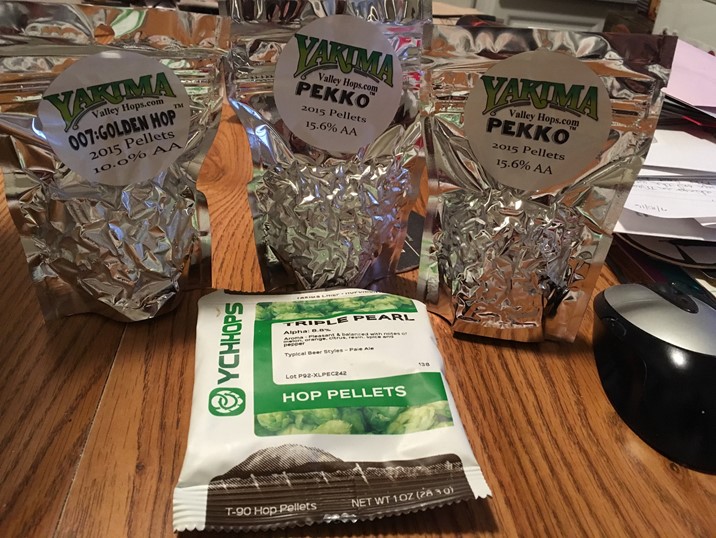
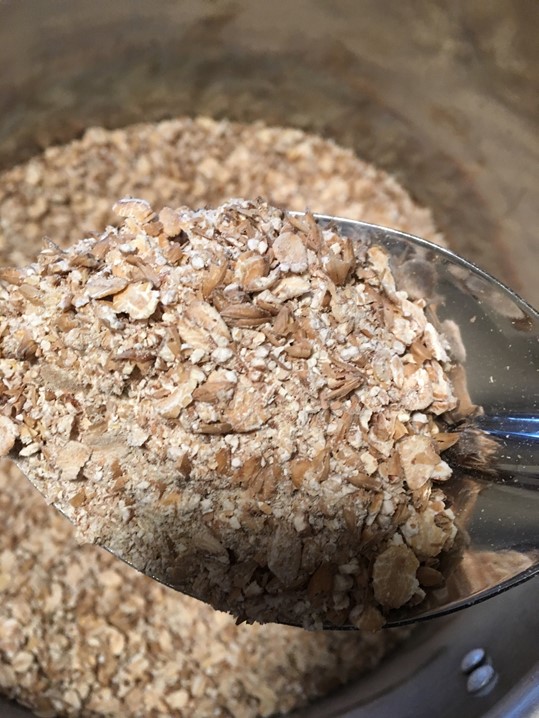
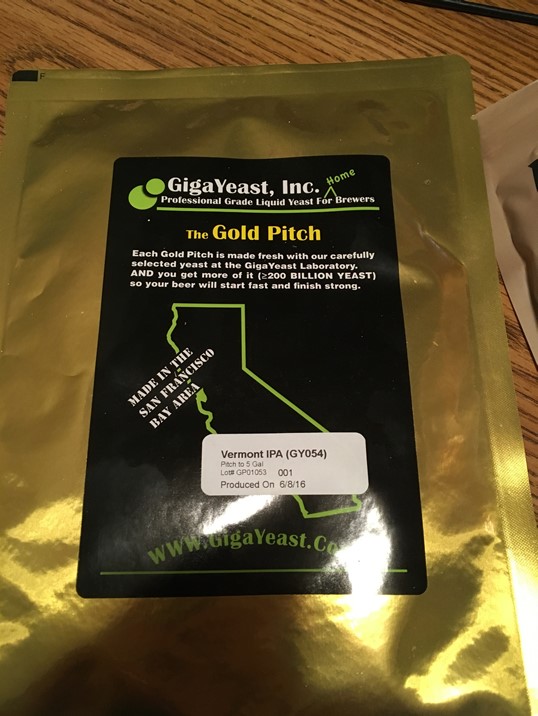
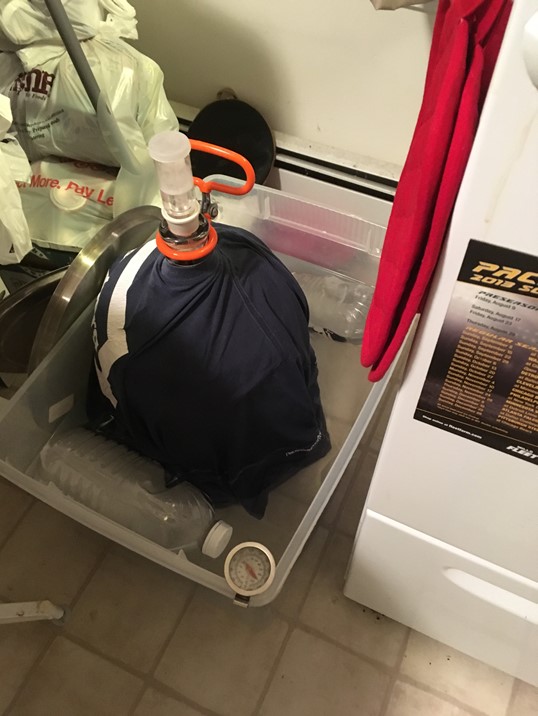
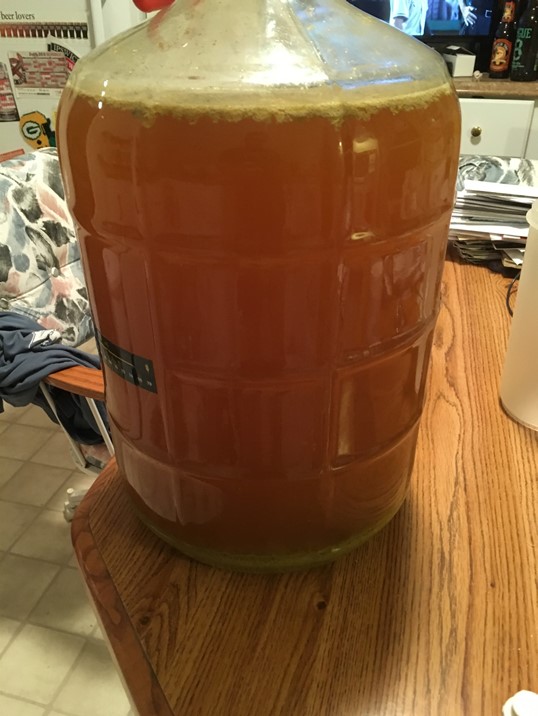
Follow me on Twitter @JChalifour
Like The Would-be Brewmaster on Facebook
Share what beers you are drinking with me on Untappd
Saturday, November 7, 2015
Brew Day: Sierra Nevada Celebration Clone (American IPA)
This year I brewed a three gallon batch in honor of Pa Chalifour, but I also decided I wanted to brew another beer the family could enjoy during the holidays. My thought was to brew a West Coast IPA for my hop-loving cousins.
| Name a more iconic beer. I'll wait. |
As a beer drinker seasonal creep drives me nuts. I loathe it to the point that I developed the definitive guide for seasonal beer. Usually seasonal creep is an annoyance. I can still wait to buy a beer like Samuel Adams Octoberfest at the seasonably appropriate time. However, when a seasonal beer is an IPA that is best enjoyed fresh is when seasonal creep becomes problematic. The hop flavor and aroma in will diminish as it sits on the shelf.
Saturday, August 29, 2015
Tasting Notes: North Shore Brewers Single Hop Project
Most of the project participants brought their brews to the club picnic. Several of us, myself included will bring our beers to the New England Homebrewers Jamboree.
Tuesday, July 14, 2015
Brew Day: North Shore Brewers Galaxy IPA
| I'd call this a rolling boil. |
While my intelligence, and certainly my common sense is up for debate, I did end up working behind a desk. Any desire I might have ever possibly have to pull a Peter Gibbons and forsake cubicle life for blue collar work went out the window after this brew day. The summer of 2015 has been kind of a dud. My girlfriend was calling June, "Junuary" due to unseasonably cold temperatures. Andy and I were fortunate enough to plan a brew day on the first day temperatures crossed 90 degrees. Not only was the heat oppressive, there was no wind, and for most of the day there was no shade in his yard.
Friday, May 1, 2015
Brew Day: Cabot Street Hop Harvest IPA
| Ten minute addition on the right, flameout addition on the left. |
Friday, November 14, 2014
Tasting Notes: The Sustenance (American IPA)
On a scale of one to ten with ten being the most satisfied, I would give the beer a seven. I did a side-by-side comparison of The Sustenance and The Substance:
 |
| My beer is on the left, Bissell's is on the right. Looks like it cleared while in the fridge |
 |
| Slightly better picture of the clone. Slightly. |
I think using the campden tables to de-chlorinate the water made a huge difference. When my girlfriend tasted the beer she noticed the difference right away. She couldn't put her finger on it, but did say the beer tasted a lot better. Well, that was easy and something I should have started doing a long time ago.
If I were to do the extract version of the recipe again I would use more corn sugar and less extract to try and match the attenuation in the commercial version. Honestly, if I were to brew this again I would want to do an all-grain, or at least a partial-mash batch. I would be able to more closely match the color, and by mashing at a lower temperature create a more fermentable wort. Even adding most of the extract at the end of the boil, the clone is still noticeably darker.
As the picture shows, the clone has a much larger head. The bottles aren't gushing, but the beer is very foamy. Even when poured slowly there is a thick white clumpy head. The beer itself is almost opaque. The beer looked clear all the way until bottling. Initially I was afraid the beer became infected at bottling, but luckily the beer hasn't started gushing and it still tastes fine. Another adjustment would be to use less priming sugar.
The beer is entered in the Best of Boston Homebrew competition where I will be judging tomorrow as a final practice before my tasting exam on the 22nd. If the beer comes in with a score higher than a 30 on the BJCP 0-50 scale I will be pleased.
Follow me on Instagram @wouldbebrewmaster
Like The Would-be Brewmaster on Facebook
Share what beers you are drinking with me on Untappd
Tuesday, October 7, 2014
Brew Day: Ballantine IPA Clone
When news came out that Pabst was going to resurrect Ballantine IPA I was certainty excited to try it. I was vaguely familiar with the Ballantine brand before the relaunch. As my strong sense of nostalgia took hold I did more research and became intrigued.
| The original American IPA |
Due in part to mass emigration from Germany, lager became the preeminent style of beer in the US, and internationally for that matter. Based out of Newark and founded by Scottish immigrants, Ballantine was the one major US brewery that lasted well into the 20th century brewing ales and borrowing more from British traditions. Ballantine pushed the envelope in terms of styles and flavor. It was craft beer before craft beer existed. Unfortunately the brewery lost market share and closed in 1972. After a series of corporate transactions Pabst acquired the Ballantine brand.
Friday, September 19, 2014
Brew Day: The Sustenance (Substance Ale Clone - American IPA)
| Steeping my specialty grains. I could also have used a muslin bag. |
I designed the recipe as an extract recipe so any brewer could brew it. My last brew day was Pinch Hit Belgian Pale Ale so it was nice to have an easier brew day for a change. I steeped the flaked grains with a little 2-row in a 3 gallon stock pot. I let the grains steep for a little longer than 30 minutes as I fiddled with the recipe on BeerSmith.
Wednesday, September 17, 2014
Cloning The Substance - Part II
| Taking notes to create my recipe. |
